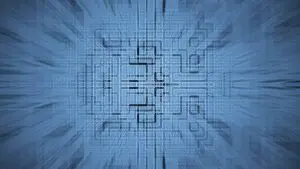iNEMI ROADMAP IDENTIFIES TRENDS IMPACTING ELECTRONICS THERMAL MANAGEMENT PREFACE The International Electronics Manufacturing Initiative (iNEMI) is an industry-led consortium of approximately 100 leading electronics manufacturers, suppliers, associations, government agencies and universities. One of iNEMI’s key initiatives is its biennial roadmap, which looks at the … [Read more...]
Calculation Corner: Estimating Parallel Plate-fin Heat Sink Pressure Drop
Editor’s note: In recognition of the 20th year of ElectronicsCooling, we are republishing articles from past issues that we believe to be of particular value to our readership. The following article was published in the May 2003 issue as a Calculation Corner authored by Bob Simons. It is the sequel to the companion article, “Estimating Parallel Plate-Fin Heat Sink Thermal … [Read more...]
Thermal Facts and Fairy Tales: Automated Meshing Philosophy?
Thermal Facts and Fairy Tales: Automated Meshing Philosophy? Peter Rodgers Fairy tales are a well-established way to convey science and technology education. For example, a recent textbook [1] has documented how a range of Victorian-era (1837 – 1901) instructors used fairies and their tales to clarify scientific and technological concepts for young audiences. Today, … [Read more...]
Cooling Matters
The World’s First Liquid-Cooled Gaming Laptop The Asus ROG GX700 has been introduced as the world’s first liquid-cooled gaming laptop. Asus ROG Global Marketing Director Derek Yu created the inch-thick laptop with a Nvidia GTX 980M graphics card, and with the cooling system as a “massive, alien-like pod filled with the extra hardware” that plugs right into the laptop, … [Read more...]
Electronics Cooling March 2016 Issue Now Online
Don’t miss out on the March 2016 Issue of Electronics Cooling, which includes feature articles on Enhanced Two-Phase Impingement Technologies for Electronics Cooling; Application of Diamond Heat Spreaders for the Thermal Management of GaN Devices; iNEMI Roadmap Identifies Trends Impacting Electronics Thermal Management; and more. If you would like to receive your free copy of … [Read more...]
- « Previous Page
- 1
- …
- 46
- 47
- 48
- 49
- 50
- …
- 180
- Next Page »










